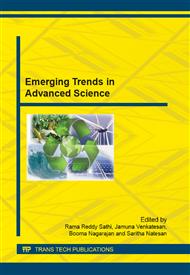p.75
p.81
p.89
p.97
p.105
p.111
p.121
p.127
p.133
Investigation of Quasi Z-Source Cascaded Multilevel Inverter for PV System with Maximum Power Point Tracking
Abstract:
This paper investigates the quasi Z-source cascaded multilevel inverter for a photovoltaic system with maximum power point tracking. The main advantage of quasi z-source configuration is that it has boost characteristics and inversion capability in a single stage avoiding complexity of having a number of converter stages thereby increasing the efficiency. Also it has continuous input characteristic which makes it best suitable for PV applications. Perturb and Observe (P&O) algorithm has been chosen for tracking the maximum power point of the PV source. Five level cascaded inverter with quasi - impedance network powered by PV sources has been considered in this paper. Maximum constant boost control technique has been implemented for controlling the shoot-through period of the inverter. Simulation of the proposed topology has been carried out in Matlab/Simulink and performance parameters have been calculated and the results are verified.
Info:
Periodical:
Pages:
105-110
Citation:
Online since:
August 2014
Authors:
Price:
Сopyright:
© 2014 Trans Tech Publications Ltd. All Rights Reserved
Share:
Citation:


